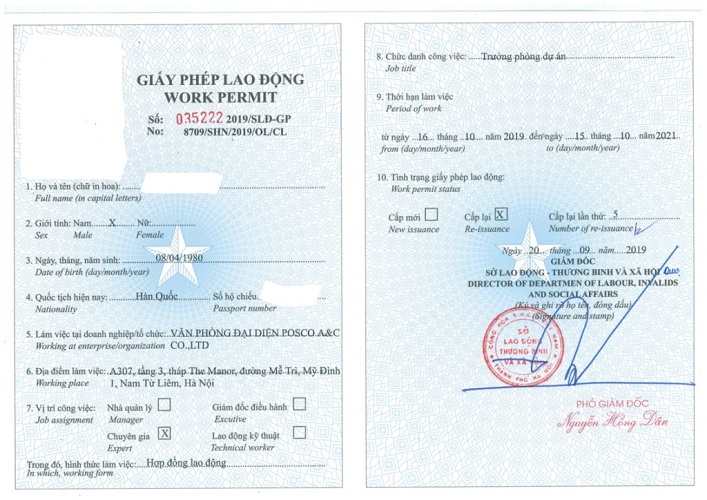In the modern business world, where changes occur by the minute, commercial contracts have become the “backbone” of every transaction. A skillfully drafted agreement enables enterprises to stand firm amid market fluctuations, protect interests, and maintain competitive positioning. However, a single erroneous clause—such as an ambiguous phrase or unclear wording—can become the source of disputes, causing damages ranging from hundreds of millions to tens of billions of Vietnamese dong.
Siglaw observes that the art of negotiation and contract drafting is not merely a legal skill but a calculated strategy, the ability to “read” partners and forecast the transaction’s future. The clearer an enterprise’s legal mindset, the easier it is to secure victory even before signing.
Commercial Contracts – When Documents Become a Strategy to Protect Enterprises
Under the Commercial Law 2005 and Civil Code 2015, a commercial contract is simply an agreement between parties to establish rights and obligations. From a practical perspective, however, the contract embodies the “soul” of the transaction: it serves as legal evidence, a risk prevention tool, and a “shield” when disputes arise.
In numerous cases handled by Siglaw, enterprises did not lose due to wrongdoing but because their contracts lacked sufficient strength to protect them. When definitions are absent, mechanisms for handling breaches are missing, liability limitation clauses are omitted, or dispute resolution provisions are unclear, enterprises are invariably placed in a passive position.
Therefore, rather than treating contracts as mere formalities, enterprises must view them as legal strategies accompanying the entire transaction lifecycle.

The Art of Negotiation – The Foundation of a Strong Contract
Before drafting any clause, negotiation is the “battle” that establishes an enterprise’s advantage. According to Siglaw’s experience, 70% of negotiation outcomes depend on the preparation phase.
To prepare for entering the negotiation table, a business needs to clearly identify its BATNA (Best Alternative to a Negotiated Agreement) and WATNA (Worst Alternative to a Negotiated Agreement).
- BATNA: What is the best alternative solution if the negotiation fails?
- WATNA: What is the worst-case alternative if the negotiation breaks down?
Clearly determining BATNA and WATNA helps the business anticipate possible scenarios, seek the best possible option, strengthen its negotiating position, increase the likelihood of reaching a favorable agreement, and minimize risks to itself.
During negotiation, the “information anchoring” technique helps enterprises set the initial framework; the party proposing first often leads the discussion.
Additionally, the art of “reading partners” is decisive. Japanese merchants typically prioritize timelines and processes; European partners focus on quality standards; American enterprises emphasize liability and compensation. Understanding a partner’s communication language directs negotiation effectively and avoids misunderstandings.
Most importantly, negotiate risk clauses: payment, acceptance, price adjustments, compensation liability, termination rights, and dispute resolution. These are where most disputes originate and where enterprises must “negotiate with legal thinking.”
Contract Drafting – Transforming Agreements into a Solid Legal Shield
A standard contract is not one that is lengthy but one that leaves no room for interpretation. Wording must be clear, sufficiently detailed, and prevent partners from “interpreting in their favor.”
The contract drafter must visualize the full context and every possible scenario that could arise, then tightly bind those situations with clear contractual provisions. The goal is to cover the maximum number of contingencies with explicit, unambiguous agreements in the contract. If any gaps are left, the risk of disputes arising during performance becomes extremely high.
To ensure logical flow, contract clauses can be organized following the principle of space or time — that is, arranged in the chronological order of the project’s steps or according to the natural sequence of events. This storytelling approach makes the contract much easier for all parties (and any future judges or arbitrators) to follow and understand.
When drafting, enterprises must build a foundation with mandatory clauses: scope of work, parties’ obligations, quality standards, payment terms, confidentiality, intellectual property, force majeure, and dispute resolution mechanisms.
Definition clauses, often overlooked, are the “core” of disputes. A phrase like “quality meeting standards” without specifying which—legal, ISO, industry, or internal—can place enterprises at a disadvantage in disputes.
Enterprises must particularly construct “defensive clauses” such as liability caps, rights to suspend performance upon partner breach, price adjustment mechanisms for market fluctuations or supply chain risks. These clauses enable enterprises to remain resilient in volatile business environments.
An Ambiguous Clause Can Cost Enterprises Dearly – Practical Lessons from Siglaw
An import-export enterprise once signed a transportation contract with a compensation clause stating: “the carrier shall be liable for actual damages.”
When an incident damaged goods worth VND 12 billion, the partner demanded full compensation. Because the contract did not specify liability limits per international standards, the arbitral tribunal ordered full payment.
Had the clause followed international practice, liability would have been 1/10 of the amount. This was not only financial loss but a “blow” to the enterprise’s operational structure. An ambiguous phrase can sometimes cost more than an entire marketing campaign.
Strategies to Build a Sustainable Contract System for Enterprises
Siglaw recommends enterprises implement contract management across the “contract lifecycle”: preparation – negotiation – drafting – execution – monitoring. Proper lifecycle management reduces dispute risks by over 60%.
Enterprises must also define a set of “non-negotiable clauses,” including: compensation liability, payment, confidentiality, exclusivity, and governing law. These directly impact core interests.
Moreover, a “win-win” mindset must be maintained. For long-term effectiveness, a contract must balance interests and respect. When partners feel protected, business relationships endure, and dispute risks decrease significantly.
Conclusion – Strong Enterprises Have Strong Contracts
In the business arena, legal power belongs not to the strongest negotiator but to those who understand the law, proactively build strategies, and protect interests from the very first words.
The art of negotiation and drafting commercial contracts is the “legal compass” guiding enterprises correctly, minimizing risks, and optimizing benefits in every transaction.
If your enterprise is preparing to sign a critical contract, develop standard contract templates, or assess legal risks, Siglaw is ready to accompany you with tailored in-depth consulting services.
With the motto “Legal Partnership – Steady Success,” Siglaw is committed to delivering fast, accurate, and cost-effective solutions to clients.
For free consultation and legal service support, please contact Siglaw Firrm:
Head Office: No. 44/A32 – NV13, Zone A Geleximco, Le Trong Tan Street, An Khanh, Hoai Duc, Hanoi.
Hotline: 0961 366 238
Email: vphn@siglaw.com.vn
Branch: 2nd Floor, House No. 103-105 Nguyen Dinh Chieu, Xuan Hoa Ward, Ho Chi Minh City









